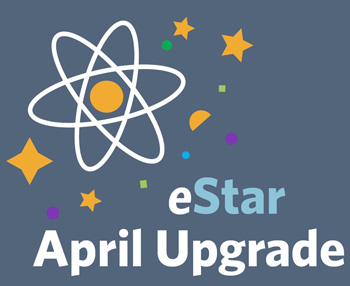In the early morning hours of April 7, eStar, the Epic-based electronic health record (EHR) at Vanderbilt University Medical Center, will undergo its first major upgrade since the system went live in a coordinated “Big Bang” across most of the Medical Center in November 2017.
Though eStar has been continually updated with numerous enhancements since the initial Go Live, the April 7 event will be its most extensive upgrade in the nearly 18 months since it was launched at VUMC.
The upgrade process began months ago when teams in VUMC’s HealthIT department received a list of thousands of changes, new features, updated functionality and workflow modifications from Epic, the software company that designed the EHR. The HealthIT teams — each of which specializes in different aspects of eStar, such as its modules for surgery and cancer — dove into this list and determined the changes that were going to bring the most benefit to Vanderbilt.
“We’re only implementing the changes that will make eStar work even better for us,” said Chief Information Officer Neal Patel, MD, MPH. “While some of the changes that Epic delivered to us are required, most of them were suggestions, and we had to partner with engaged users throughout Vanderbilt to make a quick decision if the possible change was going to be seen as an improvement.”
Of the thousands of changes that will debut on eStar on April 7, the majority will not result in significant changes to employees’ experience with the system or the way they perform their work. Likewise, the impact to Vanderbilt patients will be negligible, though they will see some new features in My Health at Vanderbilt, the online patient portal. Some of the new features mean patients can now choose to share information about the care they received at Vanderbilt with a non-Vanderbilt provider and let their care teams know about past or upcoming international travel.
There are, however, a set of new features or functionality changes that represent a substantial enhancement to current performance. Some of these updates include:
- A redesign of the “appointment desk” that employees use to schedule patients
- Side-by-side screens so clinicians can more easily review the medications newly discharged patients have been prescribed as part of their hospital stay with the medications they are taking at home
- New priority settings and color-coding for in-system communications so employees can know which messages need immediate attention
- An integrated “task bar” so clinicians can quickly place orders, such as tests for bloodwork or X-rays
Two of the most impactful changes will affect employees who work in Vanderbilt’s hospitals. The first of these exciting new features is known as the “Brain,” a tool that will help inpatient nurses better plan and work through their shifts by putting key patient information and tasks in one centralized location.
The second new feature, the “Avatar,” allows clinicians and nurses to better document, identify and review the placement of lines, drains, airways and wounds on patients. The Avatar is an illustration of a human and will, depending on the patient, appear as male, female or a young child.
To introduce these changes to the nearly 20,000 employees who use eStar, online training was assigned to them based on the parts of eStar they use to do their jobs. Additional “sneak peek” events offered employees the opportunity to talk directly with eStar experts about the changes. Employees also have access to a virtual environment and exercise booklets where they can practice their new skills before the features launch on April 7.
A brief downtime for the system will be necessary in the early morning hours of April 7 as the team rolls out the upgrade and ensures it is ready for patient care use. Confidence is high for a smooth transition, as teams have not only performed extensive testing to guarantee the various changes are all working as designed but have also engaged in several rehearsals. Leaders have had discussions with other organizations that have undergone similar upgrades with their Epic systems to gain insight into how the experience could be made even better Vanderbilt.
This thorough preparation is complemented by several safeguards. Command centers will be operational during and after the transition to track and respond to any issues related to the upgrade. Support teams will be available throughout the Medical Center to help employees if they have questions or need assistance, a dispersed model that will be strengthened with local expertise.
Since the initial launch of eStar in 2017, a network of Clinician Champions and eStar Representatives has been created and nurtured. These individuals are Vanderbilt employees — mainly providers and nurses — who receive ongoing training and communication so they can help educate and support their peers and improve the use of eStar at Vanderbilt.
“One important lesson we learned from 2017 is that it’s best when we have employees helping other employees,” said Paul Sternberg Jr., MD, Chief Medical Officer and Chief Patient Experience Officer. “Our Champion and Representative network means we have embedded and trusted eStar specialists spread all over Vanderbilt.”












